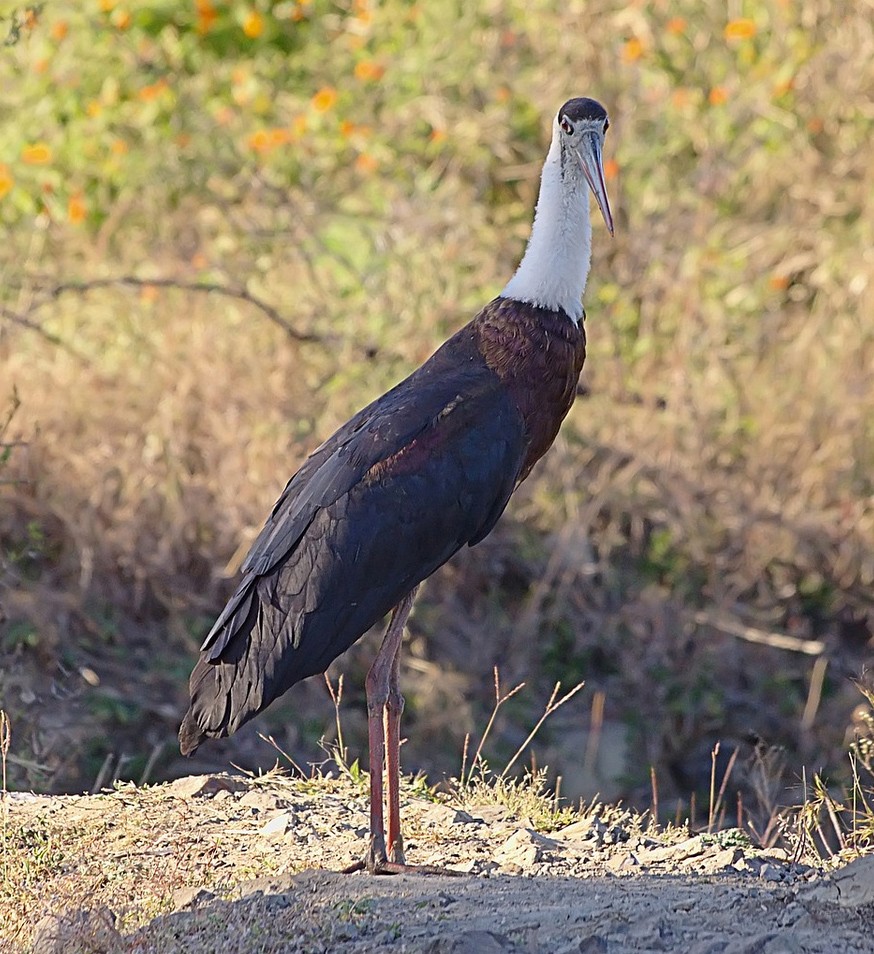Woolly-necked Stork
A species of Typical Storks Scientific name : Ciconia episcopus Genus : Typical Storks
Woolly-necked Stork, A species of Typical Storks
Botanical name: Ciconia episcopus
Genus: Typical Storks
Content
Description People often ask General Info
Description
The iris is deep crimson or wine-red. The stork is glistening black overall with a black "skull cap", a downy white neck which gives it its name. The lower belly and under-tail coverts are white, standing out from the rest of the dark coloured plumage. Feathers on the fore-neck are iridescent with a coppery-purple tinge. The tail is deeply forked and is white, usually covered by the black long under tail coverts. It has long red legs and a heavy, blackish bill. 
Size
95 cm
Life Expectancy
20 years
Nest Placement
Tree
Feeding Habits
Woolly-necked Stork primarily preys on amphibians, reptiles, and insects, foraging methodically on land. They possess unique dietary preferences, stalking prey slowly and deliberately.
Habitat
Woolly-necked Stork inhabit a variety of environments, predominantly relying on wetlands, including marshes and rivers, and agricultural regions, where they nest and forage. Their habitats encompass open grasslands and pastures, as well as the marshy clearings within southeast Asian rainforests. These adaptable storks exploit human-modified landscapes, such as irrigated farm fields, up to elevations of 1400 m. They demonstrate seasonal habitat shifts to enhance foraging.
Dite type
Carnivorous
People often ask
General Info
Feeding Habits
Bird food type
Distribution Area
It is a widespread tropical species which breeds in Asia, from India to Indonesia, and throughout Africa. 
Species Status
The woolly-necked stork is one of the species to which the Agreement on the Conservation of African-Eurasian Migratory Waterbirds (AEWA) applies. 
